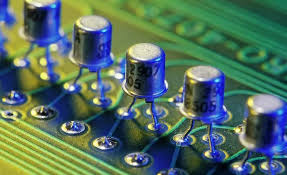The world of semiconductor technology has witnessed a significant leap forward with the development of a novel diamond transistor capable of operating in extreme conditions, even those found in nuclear environments. This breakthrough leverages the exceptional properties of diamond, such as its high thermal conductivity, extreme radiation resistance, and ultra-wide bandgap, paving the way for more efficient, durable, and powerful electronic systems in demanding applications.
Diamond, as a semiconductor material, has long been lauded for its potential to outperform silicon and other conventional semiconductors. Its superior thermal conductivity allows for more efficient heat dissipation, a critical factor in high-power electronic devices where overheating can lead to failure. Moreover, diamond's ultra-wide bandgap enables it to handle higher voltages and operate at higher frequencies, leading to more energy-efficient and faster devices. Perhaps most importantly for nuclear applications, diamond exhibits exceptional resistance to radiation damage, a characteristic that sets it apart from silicon, which degrades rapidly in radioactive environments.
One of the most significant advancements in diamond transistor technology is the recent development of the n-channel diamond MOSFET (metal-oxide-semiconductor field-effect transistor). This breakthrough, achieved by researchers at the National Institute for Materials Science (NIMS), marks a crucial step toward realizing diamond-based CMOS (complementary metal-oxide-semiconductor) integrated circuits. CMOS circuits, which require both p-type and n-type channel MOSFETs, are the foundation of modern computer chips. The creation of a functional n-channel diamond MOSFET overcomes a major hurdle in the development of diamond-based electronics, opening up new possibilities for high-performance computing and power electronics in extreme environments.
The ability of diamond transistors to withstand extreme conditions makes them particularly well-suited for applications in nuclear power plants, space exploration, and high-energy physics experiments. In nuclear reactors, where intense radiation and high temperatures can quickly degrade conventional electronics, diamond transistors can maintain their performance, reducing the need for complex cooling systems and offering significantly enhanced reliability. This robustness translates to longer operational lifespans and reduced maintenance costs, critical considerations in the nuclear industry. Similarly, in space, where electronic devices are exposed to high levels of radiation and extreme temperatures, diamond transistors can provide a more reliable and durable solution compared to silicon-based components. They are also being explored for use in high-power applications such as power grids and electric vehicles, where their ability to handle high voltages and dissipate heat efficiently can lead to significant improvements in performance and energy efficiency.
The fabrication of diamond transistors involves sophisticated techniques such as chemical vapor deposition (CVD), which allows for the creation of high-quality single-crystal diamond films. Recent advances in diamond growth technologies have enabled the production of n-type diamond semiconductors with smooth and flat surfaces at the atomic level, facilitating the fabrication of high-performance transistors. Furthermore, researchers are exploring the use of novel doping techniques, such as phosphorus doping, to enhance the conductivity of diamond semiconductors.
While diamond transistors hold immense promise, challenges remain in their widespread adoption. One of the primary hurdles is the high cost of producing high-quality diamond materials. However, advancements in diamond synthesis techniques are gradually reducing the cost, making diamond transistors more economically viable. Another challenge is the development of reliable and scalable manufacturing processes for diamond-based electronic devices. Continued research and development efforts are focused on addressing these challenges and unlocking the full potential of diamond transistors.
In conclusion, the development of nuclear-grade diamond transistors represents a significant milestone in semiconductor technology. Their exceptional properties, including high thermal conductivity, radiation resistance, and ultra-wide bandgap, make them ideally suited for demanding applications in extreme environments. With ongoing advancements in diamond synthesis and fabrication techniques, diamond transistors are poised to revolutionize various industries, from nuclear power to space exploration, paving the way for a new era of high-performance and reliable electronics.




















